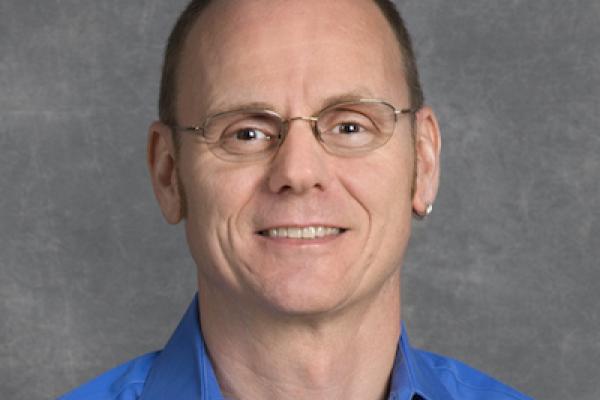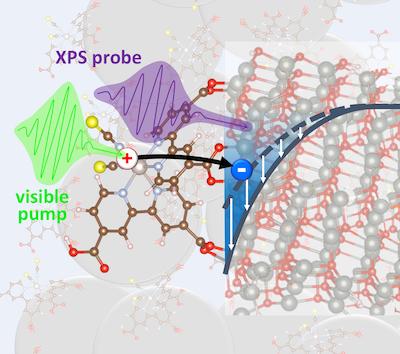
Dr. Oliver Gessner
Senior Scientist in the Chemical Sciences Division of Lawrence Berkeley National Laboratory (LBNL) and the Leader of the LBNL Atomic, Molecular, and Optical Sciences (AMOS) Program.
Catching Electrons in the Act: Ultrafast X-ray Studies of Interfacial Energy and Charge Transfer
Location: 1080 Physics Research Building, Smith Seminar Room
Faculty Host: Louis DiMauro

Abstract: Pathways toward a sustainable economy will include the harvesting of sunlight to provide storable energy in the form of charges or chemical fuels. Hybrid solar light harvesting systems, consisting of combinations of molecules, metal nanoparticles, and transition metal oxides are among the most promising technical concepts to achieve these goals. However, an essential requirement for advancing the performance of these often complex architectures is a comprehensive understanding of their photoinduced electronic dynamics across a wide range of spatial and temporal scales. Time-resolved spectroscopy techniques in the optical domain have proven instrumental in identifying critical timescales of fundamental processes, such as interfacial charge transfer, charge migration, and carrier lifetimes, which are intimately linked to a system's performance. New light source and instrument developments open opportunities to extend such studies into the X-ray regime. Due to their inherent elemental specificity and sensitivity to local electronic environments, time-domain X-ray spectroscopy techniques are uniquely suited to gain a microscopic picture of dynamics from well-defined reporter sites within often complex nanoscale light harvesting architectures. We will present new insights into fundamental photoinduced dynamics in an archetypical heterostructure based on femtosecond and picosecond time-resolved X-ray photoemission spectroscopy (TRXPS), as well as first steps toward taking time-domain X-ray spectroscopy of interfacial dynamics beyond the limitations of pump-probe measurements.
Photoinduced transient charge redistribution in the model hybrid system of nanoporous zinc oxide sensitized with ruthenium bipyridyl chromophores is probed independently from the viewpoints of the molecular electron donor and the semiconductor acceptor, revealing a multi-step charge injection process and nanoscale confinement of the injected electrons at the semiconductor surface. This strong confinement is the result of a pronounced downward band-bending inside the semiconductor toward the interface, which is further enhanced by the electron injection itself. The self-trapping-like mechanism forces injected electrons to remain localized in the defect-rich surface region, which sheds light on the known challenges of using ZnO as electrode material in solar light harvesting applications.1
The second part of the presentation will focus on the quest for strategies to monitor spontaneous, rather than externally triggered, dynamics in complex systems, which underly most of chemistry. A proof-of-principle experiment is presented that reinterprets key mathematical concepts underlying correlation-based dynamic scattering techniques, such as X-ray Photon Correlation Spectroscopy (XPCS), to extend time-resolved XPS beyond the conventional pump-probe approach. Time-Correlation X-ray Photoemission Spectroscopy (TCXPS) exploits temporal correlations between photoelectron detection events to reconstruct dynamic trends. Direct comparisons with the results of conventional pump-probe experiments will be discussed.2
- Neppl, S., Mahl, J., Roth, F., Mercurio, G., Zeng, G., Toma, F. M., Huse, N., Feulner, P. and Gessner, O., Nanoscale Confinement of Photo-Injected Electrons at Hybrid Interfaces. J. Phys. Chem. Lett. 2021, 12, 49, 11951-11959, DOI: 10.1021/acs.jpclett.1c02648.
- Brausse, F., Borgwardt, M., Mahl, J., Fraund, M., Roth, F., Blum, M., Eberhardt, W. and Gessner, O., Real-time interfacial electron dynamics revealed through temporal correlations in x-ray photoelectron spectroscopy. Structural Dynamics 2021, 8, 4, 044301, DOI: 10.1063/4.0000099.

Picosecond time-resolved X-ray photoemission spectroscopy provides real-time electron distributions of donors and acceptors in a prototypical bipyridyl-ZnO hybrid light harvesting system. The measurements show that photoinjected electrons remain localized within the defect-rich surface region of the nanoporous ZnO substrate, revealing a challenge for the extraction of free charge carriers.
Bio: Oliver Gessner is a Senior Scientist in the Chemical Sciences Division of Lawrence Berkeley National Laboratory (LBNL) and the Leader of the LBNL Atomic, Molecular, and Optical Sciences (AMOS) Program. He received his PhD from the Technical University Berlin for work conducted in the group of Uwe Becker at the Fritz-Haber-Institut of the Max-Planck Society. After his postdoctoral work with Albert Stolow at the Steacie Institute for Molecular Sciences, he joined LBNL as a Divisional Fellow in 2006 and became a Senior Scientist in 2011. His research focuses on electronic and nuclear dynamics in molecules, clusters, and interfacial systems, which are studied by means of ultrafast x-ray spectroscopy and imaging techniques. He received an Early Career Research Program Award of the DOE Office of Science in 2012, an LBNL Director’s Award for Exceptional Scientific Achievement in 2014 and became a Fellow of the American Physical Society in 2015.
